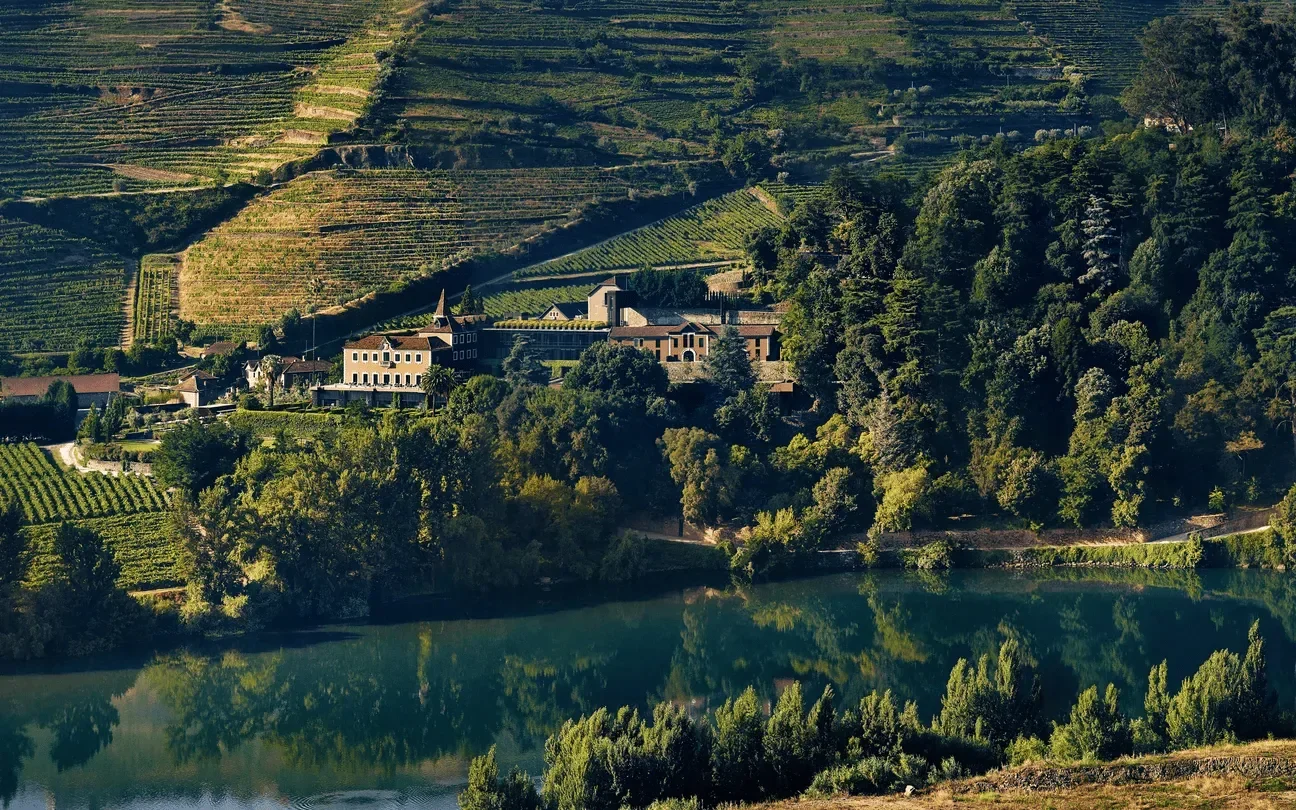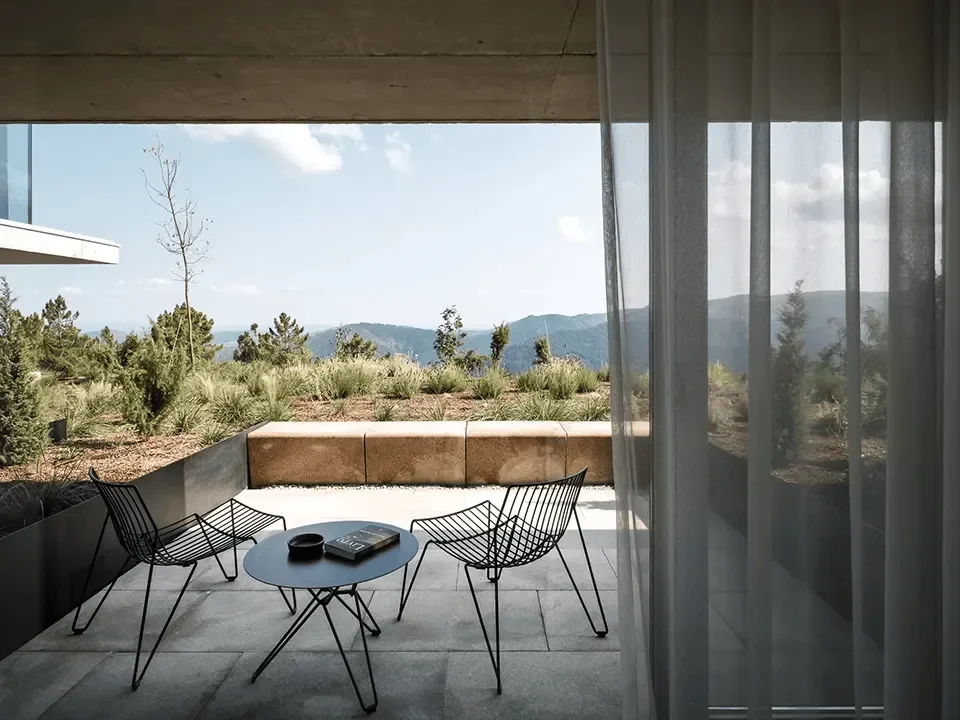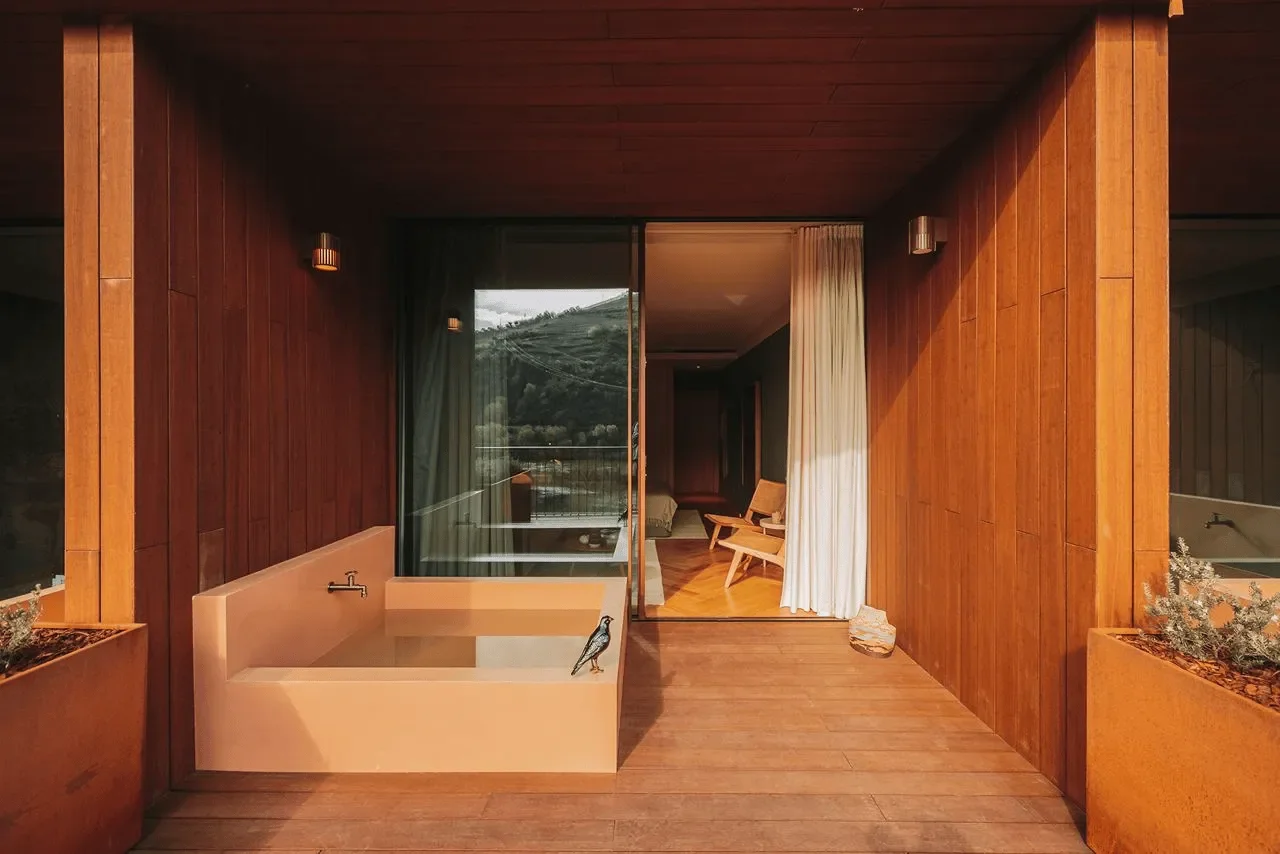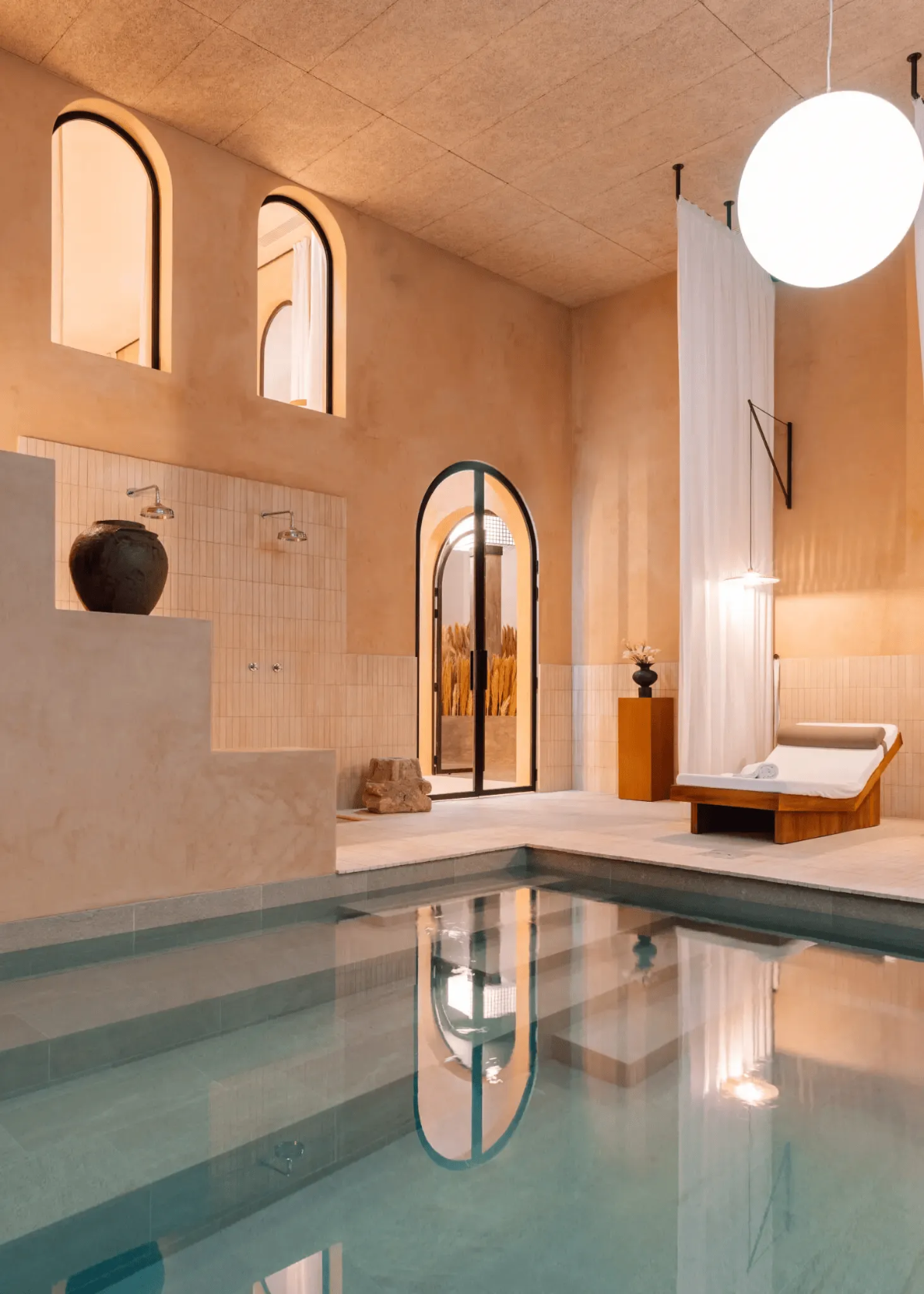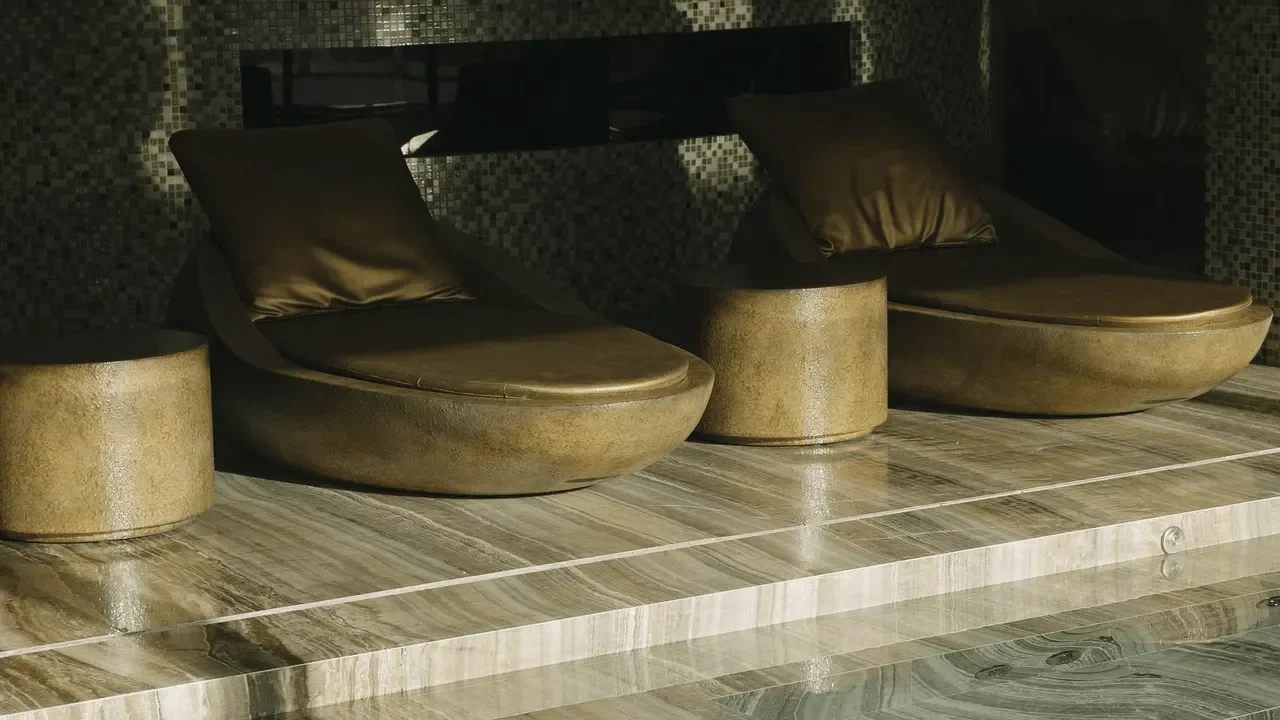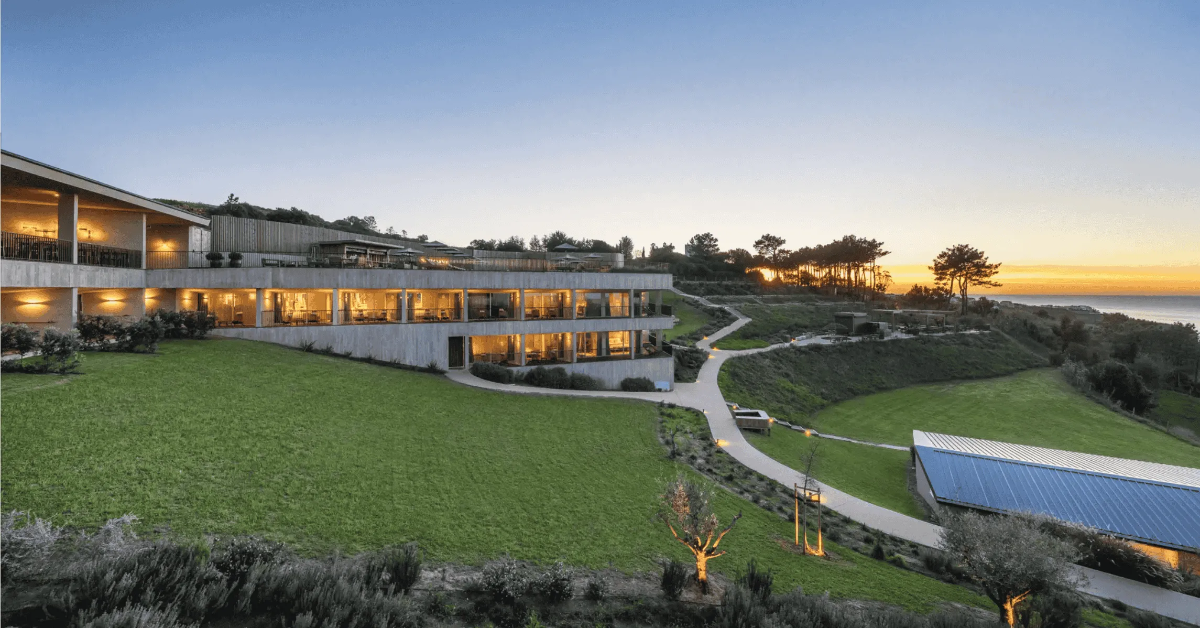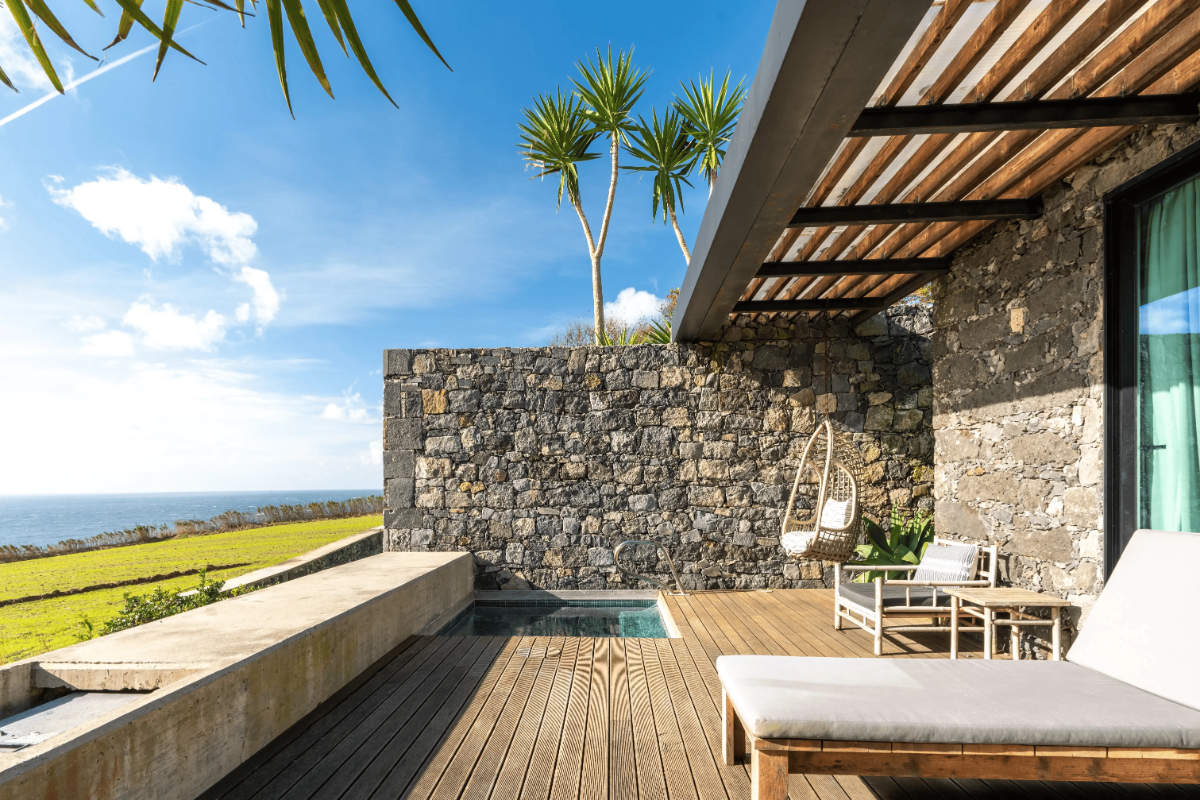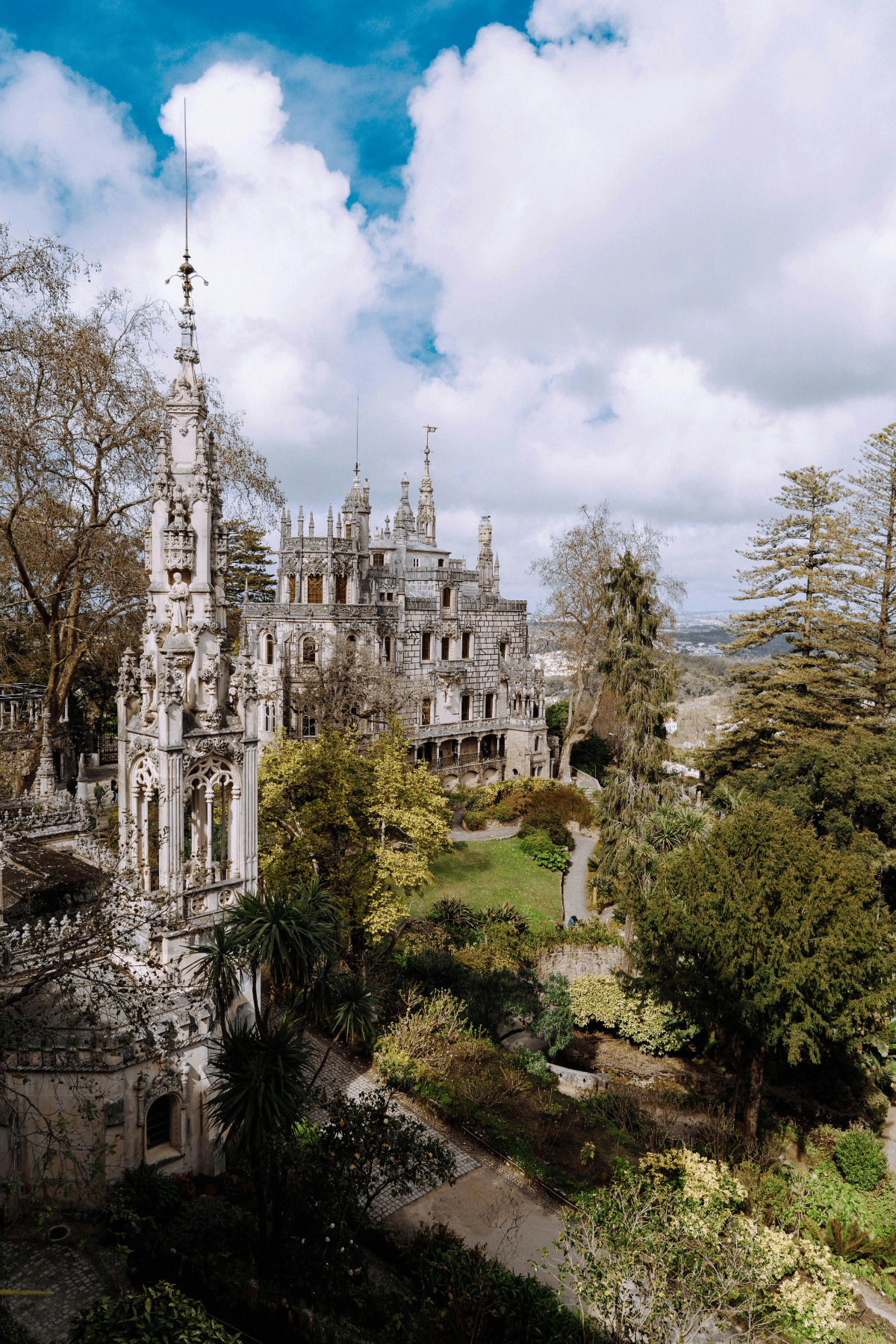Portugal Spa Odyssey: Thermal Sanctuaries from Valley to Sea
Last update October 29, 2025
Portugal spa sanctuaries blend Roman-era springs and sustainable luxury, offering vine-infused therapies and Atlantic Ocean panoramas.
The first thing you notice on a Portugal spa journey is sound, or rather, its absence. Inside a Roman-era bathhouse at Chaves, the trickle of 39 °C mineral water echoes off granite vaults. Two hundred kilometres south, Atlantic rollers boom against ochre cliffs, yet the moment you sink beneath a saltwater flotation pool, the roar fades and a heartbeat hush returns. That contrast, thermal calm against coastline drama, captures why Portugal now outranks many larger European neighbours on every global wellness index. It is a country where seventh-century monks chiselled grottoes for prayer and hydrotherapy in the same valley; where contemporary architects build glass-walled spa hotels that let you watch winter rain recharge hillside springs; and where stunning beaches, Michelin-star restaurants, and vineyard footpaths sit within one easy rail link of a medieval city center.
Seasoned travellers talk about Iceland’s lagoons, Baden-Baden’s palaces, or Bali’s jungle retreats, yet they often discover Portugal late, then wonder why they waited so long. A single week can move you from Lisbon’s yellow trams and azulejo-lined cobbled streets to fumarole-fed pools in the Azores, via terraced vineyards above the Douro Valley. Families chasing sunshine find beautiful beaches in the Algarve, digital nomads book cowork passes at surf-front wellness hubs, and heritage seekers lose hours in Neo-Manueline marble that feels cut for fairy tales. Everyone, however, arrives for the same reason: well-being. The locals call it saúde, health that embraces mind, body, land, and sea.
Below, you’ll follow a flowing itinerary, north to south, mainland to islands, that stitches twelve flagship resorts plus two bonus Lisbon hideouts into one coherent route. Each profile reads like reportage: three or four full paragraphs, no bullet points, a story arc that begins with setting, zooms into signature body treatments, and ends with practical details like parking, confirmed availability, and how many nights you should linger. By the end, you will know exactly where to book for a romantic autumn holiday, which properties welcome multi-generational family groups, and why a second soak in iron-rich water is often the perfect place to recover from jet lag.
The Journey Ahead
Affiliate Disclosure
Some links in this post are affiliate links. That means we may earn a small commission, at no additional cost to you, if you choose to make a purchase. These are always brands, stays, or experiences we would recommend to a dear friend. Thank you for supporting the quiet sustainability of Terra Selene.
Why Portugal Spa Culture Endures
Roman-Era Hydrotherapy Roots
Archaeologists have uncovered mosaics near Chaves showing senators moving through caldarium, tepidarium, and frigidarium cycles two millennia ago. Those mineral-rich springs still surface at Vidago Palace Hotel, where marble pillars frame a quiet thermal pool. The Romans believed alternating hot and cold immersion stoked “sanitas per aquam,” and contemporary Portuguese physicians still prescribe balneotherapy for arthritis, respiratory issues, and burnout.
Thermal Springs & Vinotherapy
The Douro Valley, the world’s oldest demarcated wine region, layers another healing agent atop water: grapes. Tannins, resveratrol, and grapeseed oil form the backbone of vinotherapy at several hotel spas. Vine barrel soaks at Six Senses Douro Valley combine warm spring water with organic cabernet must, while Monverde Wine Experience Hotel uses chilled grape pips in contrast baths. The ritual mirrors vineyard life: heat for fermentation, cold for clarification.
Featured Spa Hotels
Northern Portugal
Six Senses Douro Valley
Tucked into schist terraces only ten minutes from Peso da Régua’s city center, Six Senses Douro Valley is the flagship Portuguese outpost of the Six Senses collection. Approach along a cedar avenue, and you smell fermenting Touriga Nacional even before you glimpse the nineteenth-century palace façade. Check-in feels more laboratory than lobby: a sommelier grades your palate while a sleep doctor analyses circadian metrics. Upstairs, suites carry that diagnostic mood forward, mattresses adjust firmness by the second, blackout blinds seal against dawn, and motion-sensing night lights keep midnight bathroom trips gentle on melatonin.
Descend the oak stairs to the 2,200-square-meter wellness wing and the phrase treatment rooms earn literal weight: walls are recycled port barrels; ceilings send grapeseed aromatics drifting across cedar benches. Start with a chromotherapy vitality pool, then move to the barrel bath, warm spring water, pinot noir pulp, and resveratrol foam, a full body exfoliation so natural it is technically edible. Therapists finish with a grape-stem scalp ritual that leaves hair shiny and lymph nodes humming. Those craving active outdoor activities can hike forest switchbacks with a biologist who catalogues fungi; others join a cellar-door blending class where casks date back to 1882. Confirmed availability fluctuates wildly during harvest, so book six months ahead or watch the online tracker each dawn. Free valet parking is abundant; EV chargers pull hydro power from the estate’s micro-turbine. Two or three nights let you integrate vinotherapy with a woodland sound bath and a lavender-salt float; anything less feels rushed.
Torel Quinta da Vacaria
Five kilometres from Vila Real’s city center, a cypress-lined drive curls toward Torel Quinta da Vacaria, an ochre manor whose baroque stone crest still bears the bulls-head insignia of the original vintner family. Time slows the moment you cross the courtyard: swallows loop under terracotta eaves, and the perfume of sun-warmed figs mingles with fermenting must from the working winery next door. Inside, thirty-three suites unfurl beneath cedar beams; velvet armchairs in Douro-red echo the valley’s shale cliffs, while French doors open onto private loggias overlooking regimented vines.
Wellness flows naturally from enology. Begin in a barrel-vaulted tepidarium where juniper steam preps skin, then follow a therapist through arcaded cloisters to a granite alcove lit by beeswax candles. The signature ritual, Terroir Resonance, starts with a grapeseed-salt scrub, moves to a warm cabernet-marc wrap rich in resveratrol, and closes with a lymphatic facial using crushed Touriga Nacional leaves. Afterwards, wander to the sunken meditation garden: ancient lemon trees shade stone benches where a fountain murmurs like distant river rapids.
Late afternoon, sommelier-led aroma workshops teach you to distinguish eleven native-grape scent notes, violet, black olive, wild rock-rose, before pairing each to estate olive oil in a crescendo that fuses gastronomy and therapy. Dinner unfolds in the vaulted salon, duck breast glazed with late-harvest port and pickled green walnuts.
Confirmed availability spikes every September harvest; outside those weeks, mid-week packages fold in degustation menus and a sunset cask tasting on the panoramic balcony. Courtyard parking is ample for guests, with a separate bay for touring motorbikes and two discreet EV stalls fed from the property’s micro-solar farm. Linger at least two nights: one to explore the barrel labyrinth, another to rise with dawn mist rolling off the Douro, watching morning light ignite every vine row like filigree.
The Rebello
Cross the Dom Luís Bridge from Porto’s UNESCO core, and you reach Rua de Serralo, once a warehouse lane, now home to The Rebello. The red-brick former factory keeps its saw-tooth roof yet hides a hushed spa of basalt steam cabins, an aromatic ice fountain, and a rooftop infinity pool whose mirrored edge captures twin bell towers at sunset. Inside the loft-style rooms, you’ll find Portuguese wool throws, portable record players, and floor-to-ceiling views of rabelo boats. Signature Mindful Mobility combines cupping, assisted stretching, and magnesium spray, ideal after days of exploring hilly city gradients.
The hotel’s restaurant, Pot&Pan, elevates Atlantic cod with foraged dulse and Meyer-lemon beurre blanc, proving that dining can echo spa services. Live Fado sets finish by 22 h, protecting guests’ sleep hygiene. Confirmed availability is easier mid-week; watch for “Vinho & Vision” packages that bundle river cruises. There is paid underground parking (height 2.05 m), and the concierge warns of narrow ramps that deter oversized SUVs. Families appreciate board-game lounges and adjoining suites; pet owners receive organic treats. With light rail so close, you can skip a hire car and walk the entire city center; the return hill climb doubles as cardio.
Vila Foz Hotel & Spa
At the western edge of Porto, where nineteenth-century mansions face the Atlantic Ocean, Vila Foz rises like a pink wedding cake. Push the wrought-iron gate and marble steps lead into salons dressed with crystal chandeliers and pale-rose silk. The wellness wing anchors the annex: heated loungers, hydro circuit, and treatment rooms sheathed in white Calacatta. Sea-spray aromatics drift through the hammam while therapists alternate warm algae packs with cryo-jetted salt water for circulatory health. A post-treatment tea ceremony serves kombu broth, acknowledging the sea’s iodine gift.
The Michelin-star dining room, also named Vila Foz, plates John Dory over kombu emulsion, bridging kitchen and hydrotherapy. Service glides: staff remember espresso orders by day two, and turndown includes lavender pillow mist. Summer weekends sell out, but shoulder seasons offer availability and crashing-wave drama. Valet parking is included in every suite rate; Tesla chargers sit beside vintage lime trees. A ten-minute ride (hotel shuttle on demand) returns you to the city center galleries, handy if rain interrupts your beach walk.
The Green Minho and Mountain Air
Monverde Wine Experience Hotel
Transition into northern Minho and the landscape flushes emerald. The Monverde Wine Experience Hotel lies 40 minutes north of Porto, surrounded by rambling vineyards and forest. Architect Fernando Coelho designed cedar-perfumed rooms that unfold like origami towards terraces where goats graze. Therapists here invent “terroir footbaths”: guests step onto trays of schist, granite, and alluvium to ground before immersion. The full body exfoliation uses chilled grape pips to stimulate lymph flow, then warm Touriga Nacional marc to nourish skin. A biomass boiler heats the indoor pool, shaving 32 t CO₂ yearly.
Families love the sensory trail, kids crush grapes, blind-taste honey, and collect oak acorns, while couples chase sunset bikeways. Confirmed availability is steady except late September harvest. Free open-air parking lines a cork-oak alley; each bay labelled by grape variety. The on-site wine school runs WSET classes, ensuring guests take knowledge home, not just bottles. Two nights suffice unless you plan the diploma.
Casa de São Lourenço
Climb to 1,250 m in Serra da Estrela, and granite gives way to a glacial bowl, home to Casa De São Lourenço. Here, a modernist palace of glass and Burel wool surveys the Zêzere Valley. Winter snow or summer wildflowers, it always stuns. Start with a pine-resin inhalation in the suspended‐glass sauna; then a eucalyptus salt scrub and a hydro-massage pool with levitating valley views. Treatment protocols harness altitude: guided breathing raises blood-oxygen saturation; cryo-plunge in meltwater rivulets tempers inflammation. In-house pastry chefs serve Serra cheese, raw honey, and rye bread, little farm-to-table icons of the region.
Rooms are spacious (48 m² minimum), beds face mountain sunsets, and underfloor heating feels like geothermal cuddling. Parking is free, but snow chains are mandatory from November through to April. Confirmed availability tends to dip mid-January when the road sometimes closes; call daily if you hope to arrive after storms. Three-night packages bundle a dawn snowshoe and an astrologer-led stargazing, seriously romantic.
Lisbon and Centro
The Lumiares
No Portugal itinerary is complete without Lisbon, a city of seven hills, trams, and azulejo mosaics. The Lumiares occupies a converted seventeenth-century convent steps from Miradouro de São Pedro. Interiors marry brass, cork, and hand-painted tiles; treatment rooms hide one level below a rooftop cocktail bar. Choose the Karin Herzog oxygen-infusion facial, rare in Europe, then float in a colour-cycling vitality pool while gulls wheel overhead. Two rooftop restaurants cater to early or late diners, meaning you can chase Fado in Alfama and still meet macronutrient goals.
Expect no on-site parking, streets date from 1600, yet the concierge books underground bays four minutes away. Confirmed availability falls during Web Summit and summer St Anthony festivities; beyond those windows, savvy travellers score deals. Mention Terra Selene for complimentary eucalyptus shower cubes.
Corinthia Lisbon
In uptown Lisbon, Corinthia’s marble atrium hides Southern Europe’s largest urban hydro circuit: 13 treatment rooms, tepidarium, sensory showers, and a salt-float chamber tuned to pink noise for relaxing Theta waves. The best-selling programme, called Urban Reset, strings together deep-tissue jet therapy, magnesium wrap, and mental-fitness coaching. Parents can book a family cabana; teens join mindfulness workshops. With 518 rooms, confirmed availability rarely sells out except New Year. Guests praise concierge service, metro cards pre-loaded, last-minute restaurant tables fixed, it feels telepathic.
Valet parking is subterranean, and lifts rise straight to suites. Green roofs and recycled grey water show big-footprint properties can still chase sustainability.
Immerso HOTEL
Perched on a cork-and-pine hillside 40 minutes from Lisbon’s city center, Immerso Hotel overlooks the world-class breaks of Ribeira d’Ilhas. Suites blend pale oak, linen, and rattan, all angled toward the Atlantic. The wellness wing favours “blue-mind” therapies: a Karin Herzog oxygen facial, deep-tissue surfer’s massage, and a magnesium vitality pool framed by floor-to-ceiling glass. Between sessions, guests join coastal sound baths or e-bike the eucalyptus ridgeline, ideal outdoor activities when the surf’s blown out. With only 40 rooms, confirmed availability vanishes on summer swells; shoulder-season weekends are your best bet. Free hillside parking and solar-fed EV chargers round out the low-impact footprint.
Alentejo and the Algarve
Sublime Comporta
Drive 90 minutes south of Lisbon’s city center, and sand spits replace suburbs. Sublime Comporta scatters cabanas across 17 ha of umbrella pines. Each suite owns an outdoor fire pit, a hemp hammock, and a glass wall facing rice paddies. Inside the spa hotel, cedar-lined corridors lead to a candlelit salt-rock sauna and treatment rooms scented with crushed fig leaf. Therapists blend basil-seed scrubs, local clay masks, and calendula balm. A saltwater circuit ends at a deck where nightly astronomy classes unfold; they call it the Star Hub, and it earns the phrase perfect place without cliché.
Horseback rides along dunes, SUP safaris in Sado estuary, outdoor activities pair wellness with wildlife. Families borrow cargo bikes; babies sleep on woven-grass loungers by a shallow pool. August fills 100 % capacity, but June and late September still show confirmed availability if you check the web portal daily. Solar panels handle 70 % demand, and any surplus energy flows to the village grid. On-site parking is sandy but ample; EV at reception.
Azores
Octant Furnas
São Miguel’s Furnas valley vents steam twenty-four seven; Octant Furnas channels that energy. A 60 °C spring feeds the cast-iron vitality pool, while geothermal pipes heat corridors, carbon neutrality in action. Basalt-stone massage, ginger-lily compress, and a lava-scrubbed Hammam build a sensory crescendo. Post-therapy, you savour cozido stew cooked six hours underground. Evening “caldeira walks” pass boiling mud; lanterns turn vapour into ghost theatre.
Family-size suites offer tatami daybeds and storybooks on volcanic science. Parking is free yet limited; the arrival staff directs overspill to a meadow lot. Rain never deters; the hotel lends Wellington boots. Confirmed availability stays tight in July–August; build flexibility into flights.
Sensi Azores Nature and Spa
Eight kilometres of hairpin switchbacks carry you from São Miguel’s dairy pastures to Sensi Azores Nature and Spa, a minimalist sanctuary stitched to a lava bluff where the Atlantic Ocean thrums beneath your balcony. Just forty basalt-stone bungalows, each wrapped in cedar slats and perfumed by salt wind, guard a hush broken only by Cory’s shearwaters at dusk. At dawn, the horizon blushes peach while you soak in a cliff-edge tub; after dark, the same water glows with bioluminescent plankton, turning the bath into a moving galaxy.
Wellness here grows from volcanic soil. Therapists start the day in the permaculture garden, harvesting calendula, yarrow, and peppermint for warm-compress body treatments that unknot long-haul shoulders. Inside the stone-domed sound temple, shell bowls carved from local conch resonate at delta-wave frequencies, true sonic balm. Guest kits come plastic-free; greywater irrigates banana trees by the free parking lot. With only forty rooms, confirmed availability disappears months out. Set a background alert or travel mid-week in shoulder season when whales breach offshore and the spa’s cedar sauna overlooks a sea of empty blue.
Booking Advice and Seasonality
City center hotels in Lisbon and Porto surge during conferences, marathons, and St John fireworks. Check Visit Porto’s calendar, then aim for three days either side for lower rates. Mainland resorts publish cancellation windows, usually seven days, for credit vouchers, not cash. Rural palaces run flexible plans, but island retreats often demand 50 % deposits.
Confirmed availability tip: Register loyalty log-ins at every property; hidden members-only pages refresh inventory hourly.
Parking reality: Heritage lanes date before cars; reserve narrow spaces if you drive. Six Senses, Vila Foz, and Monverde mark oversized bays in green on apps so you can reverse confidently at night.
Health paperwork: Some geothermal springs stain swimsuits; pack dark fabric. Mineral content aids skin and joint health, yet ask your GP about hypertension limits.
Family policy: Under-12s lodge free in most Lisbon hotels; island resorts cap each room at three minors.
Restaurants: Book early if chasing Michelin; Lisbon averages two-week waits. Lumiares’ rooftop opens walk-ins at noon; this second mention balances its keyword range.
Low season, from November to February, rates drop 35 %, but indoor spa services feel cosy against Atlantic gales. Early spring bursts with almond blossom in the north; October harvest colours the Douro Valley gold. June unlocks surfer culture, Immerso hosts dawn rides, and August turns Algarve beaches social. Fly TAP Air Portugal multi-stop to chain Porto–Lisbon–Ponta Delgada without backtracking.
Final Thoughts
A Portugal spa pilgrimage is not flash-in-the-pan tourism; it is heir to 2,000 years of hydrotherapy, farm medicine, and architectural ambition. You feel that lineage when you watch moonlight ripple across a carved-stone pool at Six Senses Douro Valley, when ocean wind rattles bamboo screens at Sublime Comporta, or when volcanic steam halos your face in Furnas, and even when you day-trip to the fairytale palaces of Sintra, where forest-cooled air carries its own quiet medicine.. Every hotel, every resort, every barrel bath, and salt float writes a sensory chapter you will revisit each time you sip vinho tinto back home.
Treat these sanctuaries with respect: arrive curious, linger three nights, not one, tip therapists, and follow the land’s natural rhythm, late breakfasts, slow lunches, barefoot vineyard strolls, sunset swims. In return, Portugal will gift you saúde: a circadian reset, glowing skin from antioxidant body treatments, and a calmer nervous system that travels lightly through the wider world. Indulge, yes, but also listen; let mineral water, Atlantic surf, and cork-forest birdsong remind you that true luxury is the freedom to simply rest.
Boa viagem, and may each spa hotel you meet leave a watermark of serenity on your life.

